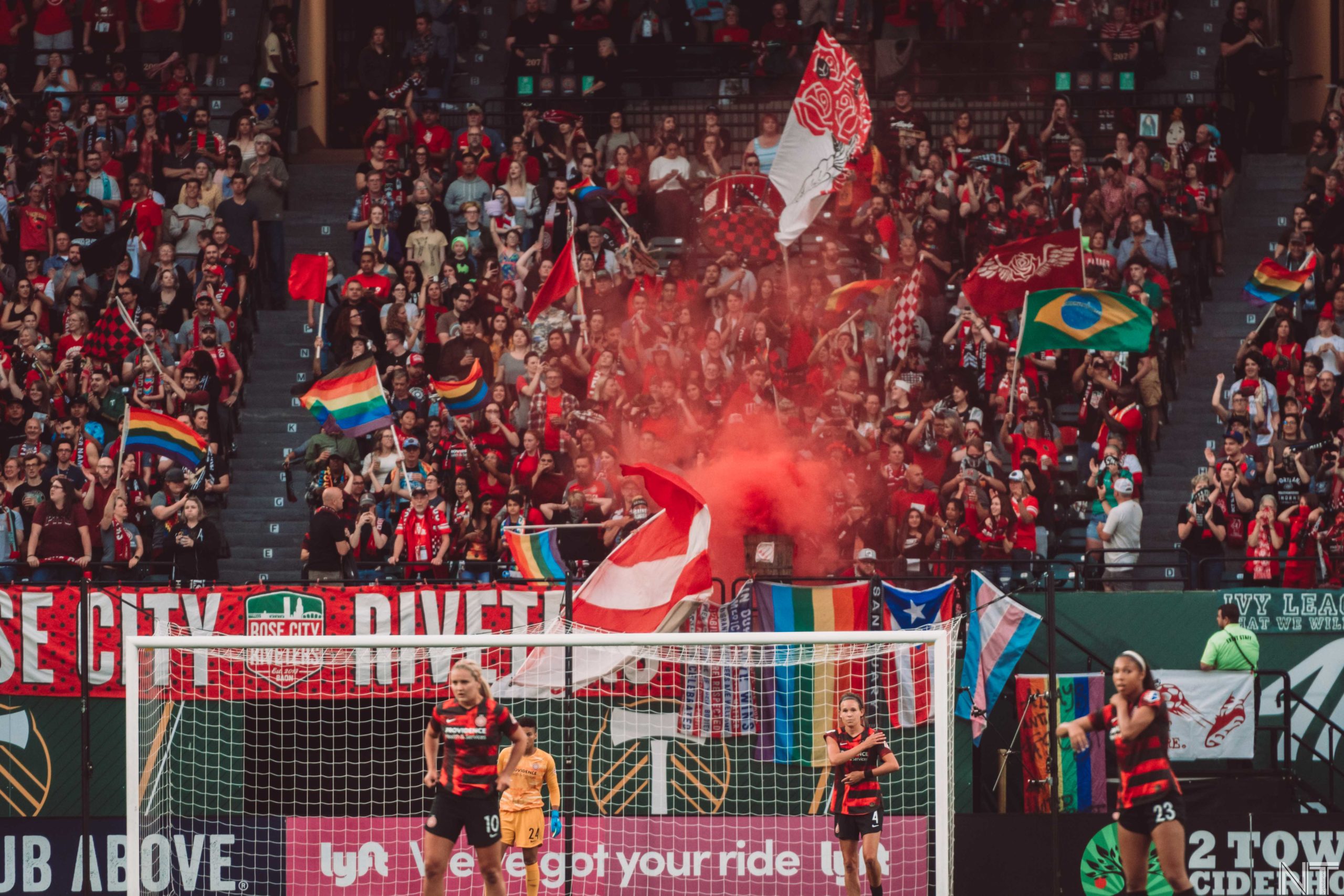I didn’t watch the first Thorns home game live; I didn’t see them claim the 2013 NWSL Championship. I keep joking that it’s because I was, like, 12 at the time, but I need to stop doing that because I literally was 12. Or rather, I was 11 when the season started and turned 12 halfway through. And although this “PTFC: From the Archives” series means I’m catching these matches for the first time, I can still reminisce about when I started following the team, about the shitty YouTube streams and what it feels like to grow up in a city that takes so much pride in women’s soccer.
I wasn’t really a “soccer kid” growing up; I played because my friends did, but just on rec teams (barring a brief stint with a club that was so small that we didn’t really get the benefits of playing club soccer). I watched the USWNT lose the 2011 World Cup Final in a penalty shootout to Japan—at the request of my dad, not because I knew anything about the team.
Regardless of my lack of investment at the time, I knew that women’s soccer existed in Portland: we launched a professional team in 2013, they were good, and people cared about them (and they cared about them a lot).
I didn’t get into soccer until the 2015 World Cup, until the Gals pulled out a 2-0 semifinal victory over a very skilled German squad and went on to win the final match within the game’s first 20 minutes, until Abby Wambach embraced Sarah Huffman on live television and someone watching with me commented that they looked like such good friends.
After the tournament, I turned to where I knew I could support women’s soccer more locally: the Thorns. I was enthralled by the energy of the Riveters, by the electric atmosphere at Providence Park, by players like Mana Shim who were like me in a way that I was still struggling to name. The culture around women’s soccer embraced community in a way that was unfamiliar to my just-out-of-middle-school self; there was a sense of “come as you are and we will welcome you.”
In 2015, I also started high school. I won’t go into all that here, but the change of scenery brought newfound freedom and friends, including people who were in the same unsure and messy place as I was. And while freshman year was downright unpleasant for the most part, it was healing to have people in my life who were in that same period of questioning—maybe not questioning, but coming to terms with a fact about ourselves that we’d tried to push away for so long.
Between friends and the community I found in women’s soccer, I reached a place where I could feel okay about being a lesbian. I discovered there is something powerful in solidarity. And I became an NWSL fan in the process.
Because beyond the Megan Rapinoes—the big names who were unapologetic in their gayness—beyond the players and fans that crafted a space that was, and (for the most part) is, a bubble where queer people are free to exist, women’s soccer is fun. The NWSL loves to tout its parity and, while the same handful of clubs seem to be the ones in postseason every year, there’s something enticing about knowing that the last-place Boston Breakers can pull out two wins over defending champion FC Kansas City, even if FCKC wasn’t quite the same without Lauren Holiday. (While we’re here, let’s take a moment of silence in memory of both these teams.)
And there’s something captivating about the Thorns: adorned in red kits with the Riveters at their backs, cheering as Adrianna Franch pulls out a save that maybe shouldn’t be physically possible, or as Tobin Heath befuddles yet another defender. It feels fitting to see that same celebrity awarded to players who don’t have the international pedigree of Christine Sinclair—to Shim and Kat Williamson, Midge Purce and Emily Menges. There’s something fulfilling in the Riveters’ unwavering support for the Thorns and for each other.
I joined my high school’s newspaper halfway through junior year—I had a free period, and I’d heard good things about the class. For something I essentially started on a whim, journalism has redefined the lens through which I view the world and myself, providing me with a sense of identity that centers around saying what I believe in, and giving me the tools and platform to do so.
I began writing about women’s soccer last year. At the encouragement of a friend, I reached out to Tyler on Twitter and asked if Stumptown Footy would consider a high school student as a contributor. The rest is pretty well-documented online.
Writing about women’s soccer, elevating the stories of the people who play it (or in this case, my own story), makes me feel like I have a purpose in the world. Covering the Thorns is wonderful, but it’s also weird and frustrating to do something I enjoy and to know that it’s not—and probably never will be—a viable career. Nevertheless, this is something I want to do as long as I can, because the community we have in Portland is extraordinary.
Within the players on the pitch and the photographers along the sidelines, from the artists and drummers and capos and yellers that make up the Riveters to the handful of us in the press box, Providence Park brings us together and makes us something bigger than ourselves.

